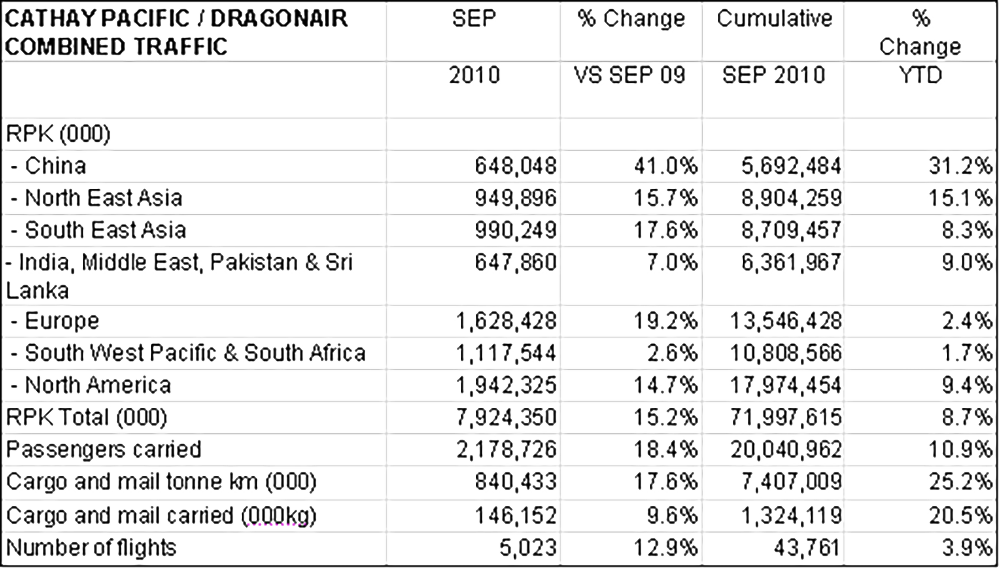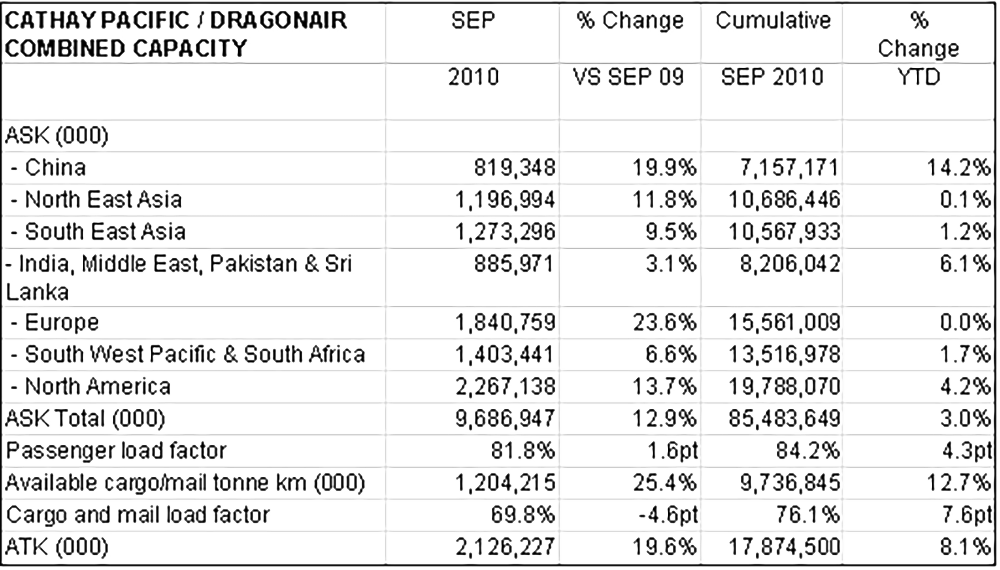Copyright © 2024 Swire Pacific Limited. All rights reserved.
Cookies and Privacy: We use cookies to enhance your user experience on our website. Please indicate your cookie preference. For more information, please read our Cookie Policy and Privacy Notice.
Cathay Pacific Airways today released combined Cathay Pacific and Dragonair traffic figures for September 2010 that showed rises in the number of passengers and amount of cargo and mail carried compared to the same month in 2009, coupled with increases in both passenger and cargo capacity.
The two airlines carried a total of 2,178,726 passengers in September - up 18.4% on the same month last year. The passenger load factor was 81.8%, a rise of 1.6 percentage points, while capacity for the month, measured in available seat kilometres (ASKs), was up by 12.9%. For the year to date, the number of passengers carried is up 10.9% compared to an ASK rise of 3.0%.
Cathay Pacific and Dragonair carried 146,152 tonnes of cargo and mail last month, up 9.6% on September last year. The cargo and mail load factor was 69.8%, a drop of 4.6 percentage points, while capacity, measured in available cargo/mail tonne kilometres, was up by 25.4%. For the year to date, tonnage has grown by 20.5% compared to a capacity increase of 12.7%.
Cathay Pacific General Manager Revenue Management Tom Owen said: "Our passenger traffic remained robust as we moved from the summer holiday season into what is traditionally the period when premium demand picks up. High load factors were seen across the system in September and demand in our Economy cabins held firm. Premium volumes and quality grew strongly against 2009 but still lagged 2008, although this gap will begin to close in the months ahead as the negative impact of the financial crisis on premium demand began to bite hard from late September 2008."
Cathay Pacific General Manager Cargo Sales & Marketing James Woodrow said: "We increased our capacity in September in preparation for the upcoming cargo peak, with all our freighters back in operation and a number of frequencies added on key trunk routes. Demand was up compared to September 2009, but at the same time we saw a significant increase in competitor capacity to Europe and North America. This led to a decrease in our overall load factor to below 70%."

